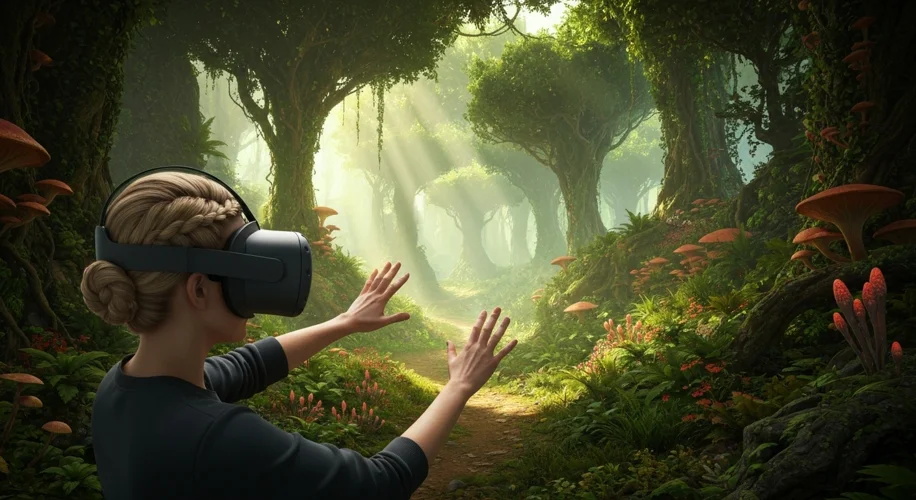Okay, so hear me out… VR is getting seriously good. We’re moving past those early days where your VR experience was basically a fancy tech demo. Now, we’re talking about truly exploring massive, complex worlds right from your living room.
What’s powering this leap? A lot of it comes down to something called procedural generation. Think of it like a recipe for creating game worlds on the fly. Instead of a human hand crafting every single tree, rock, and building, algorithms generate these elements based on a set of rules. This allows developers to create incredibly vast environments that would be impossible to build manually.
Procedural Generation: The Engine of Exploration
This is huge for open-world VR. Imagine loading into a game and knowing that the forest you’re about to venture into, the sprawling city in the distance, or even the mountain range on the horizon, has never been seen by anyone else before in quite the same way. Games are starting to leverage this to create truly unique and expansive play spaces. This means more forests to get lost in, more cities to discover hidden alleys in, and a constant sense of novelty.
Moving Freely: Breaking the Teleport Habit
But what about getting around? For a long time, teleportation was the go-to movement mechanic in VR. It’s efficient and prevents motion sickness, but it can also break immersion. The good news is, developers are getting much better at implementing smooth locomotion options. Think analog stick movement, arm swinging, or even more advanced techniques that reduce that queasy feeling. This makes exploring those procedurally generated worlds feel much more natural and engaging. It’s the difference between skipping across a map and actually walking through it.
Google Maps VR: A Glimpse of the Future?
This interest in large-scale exploration also reminds me of tools like Google Maps VR. While it’s not a game in the traditional sense, the ability to virtually fly over cities, explore landmarks, and get a real sense of scale is pretty amazing. It shows the potential for VR to not just entertain, but also to educate and allow us to experience places we might never visit in real life. Imagine if game worlds started incorporating that level of real-world data and detail, combined with procedural generation for infinite variety. That’s a future I’m excited about.
As VR technology continues to evolve, I’m really looking forward to seeing how these open-world experiences expand. The combination of procedural generation and more natural movement mechanics is opening up incredible possibilities for immersive exploration. It’s like we’re finally getting the keys to truly vast, digital playgrounds.

